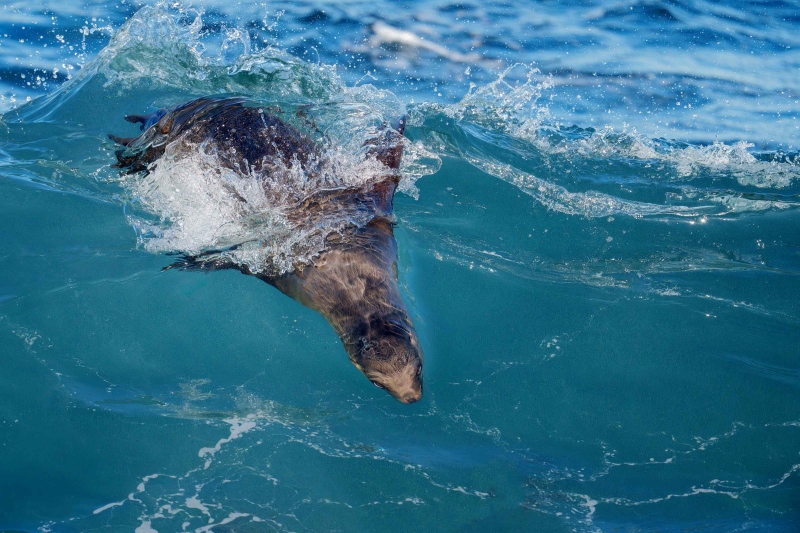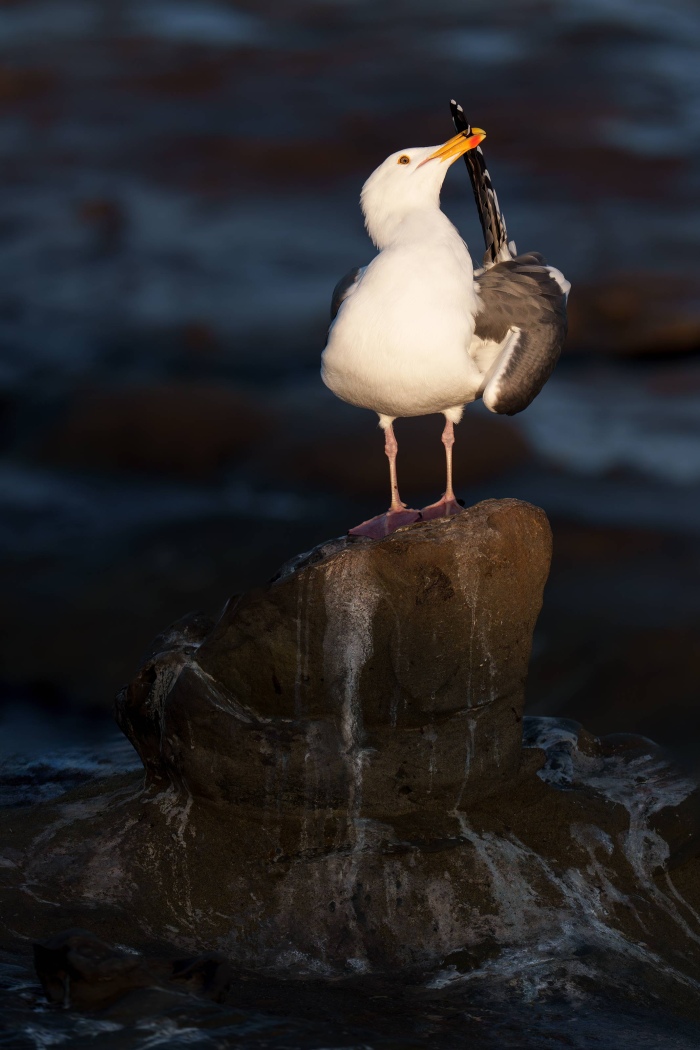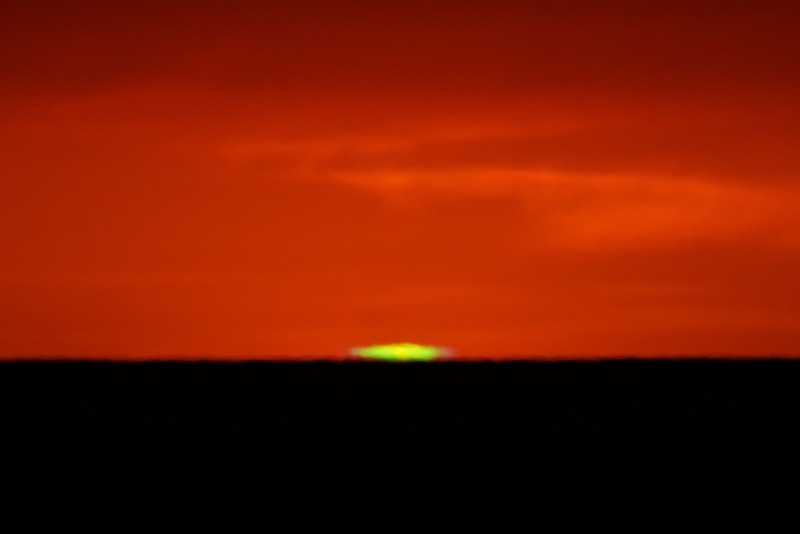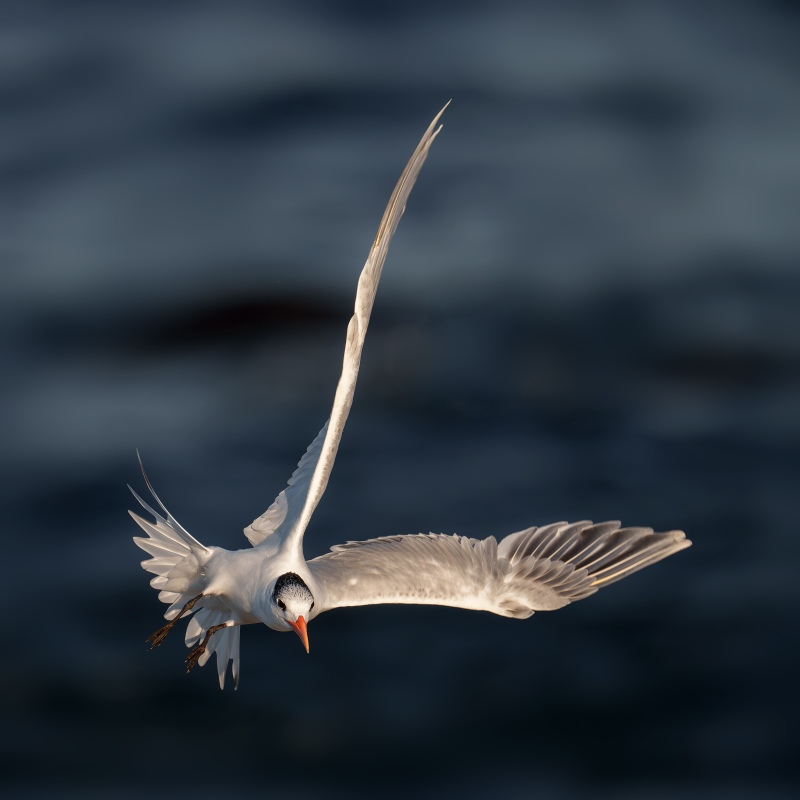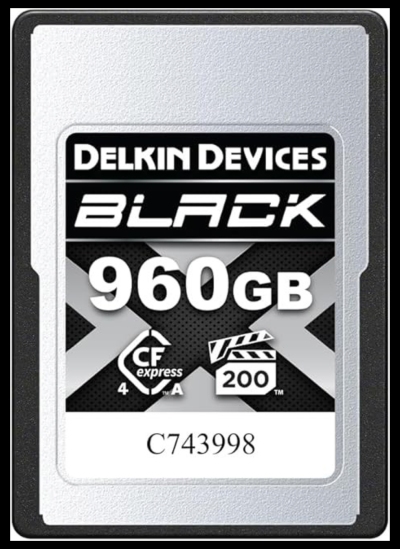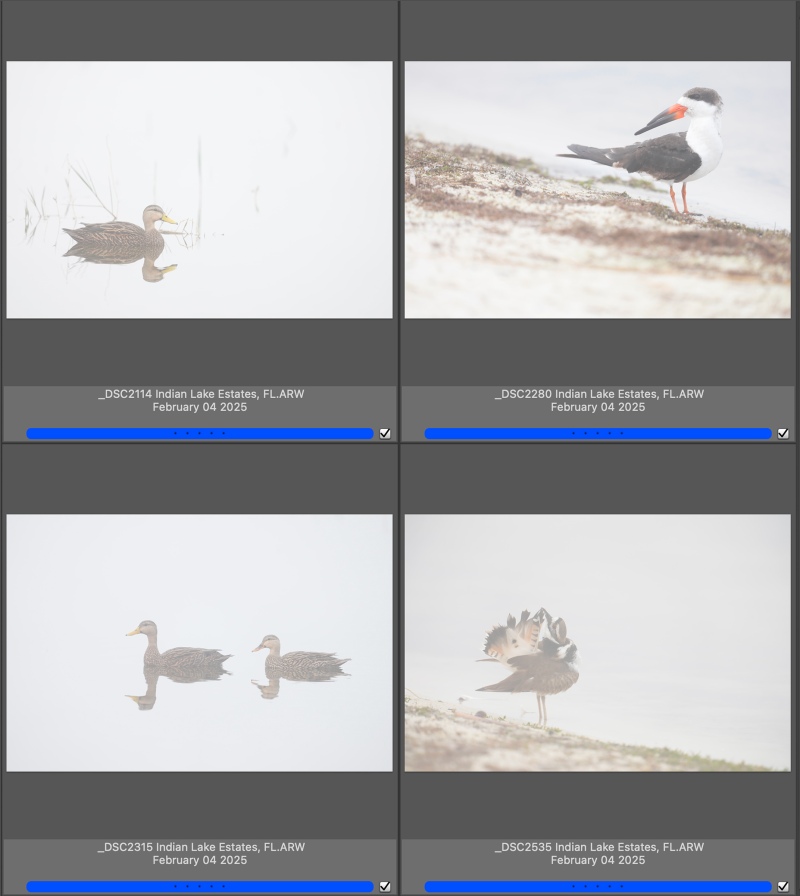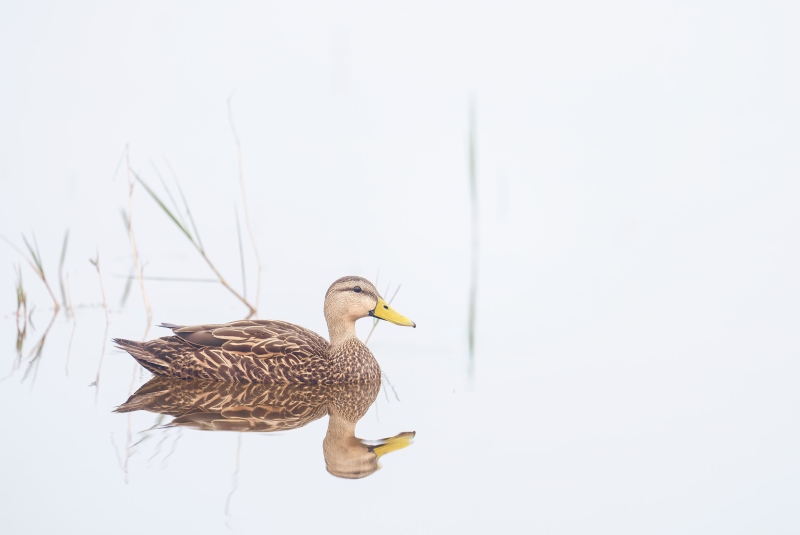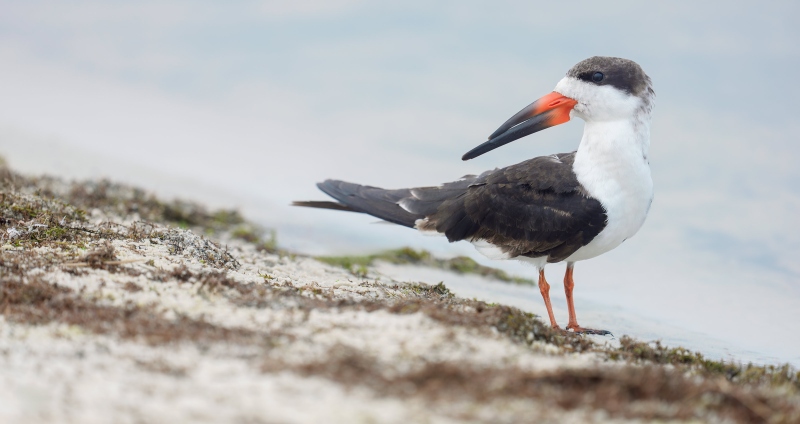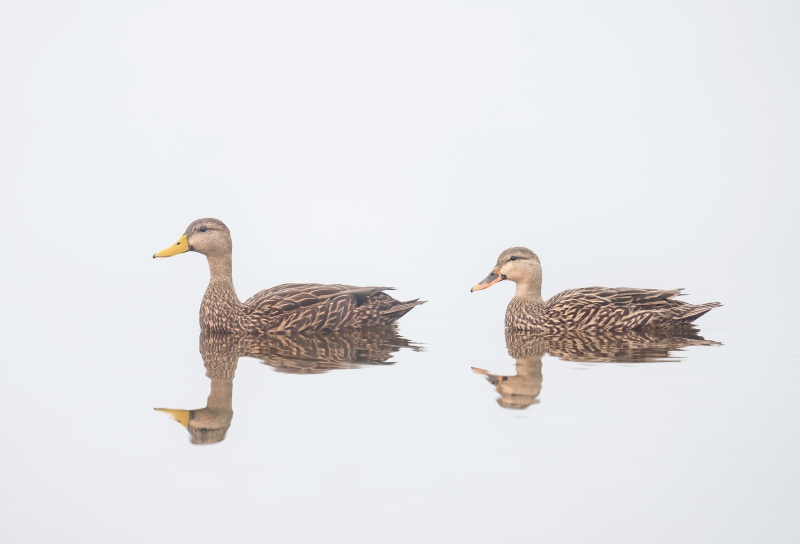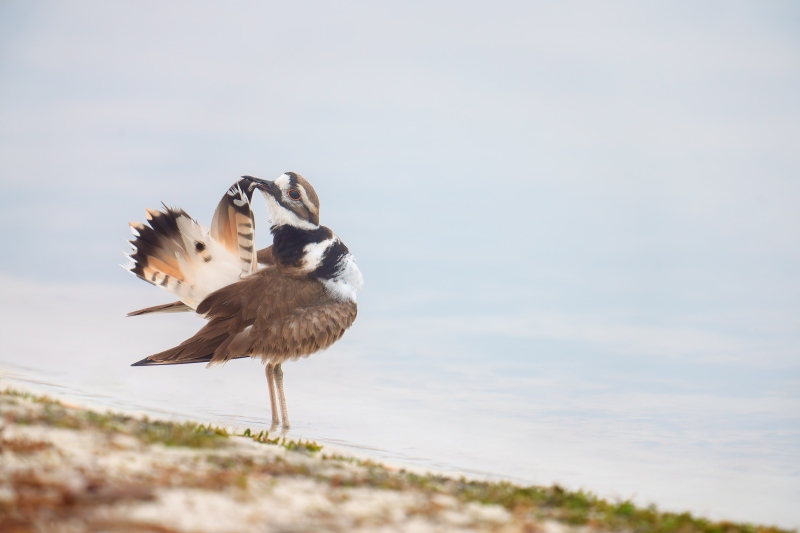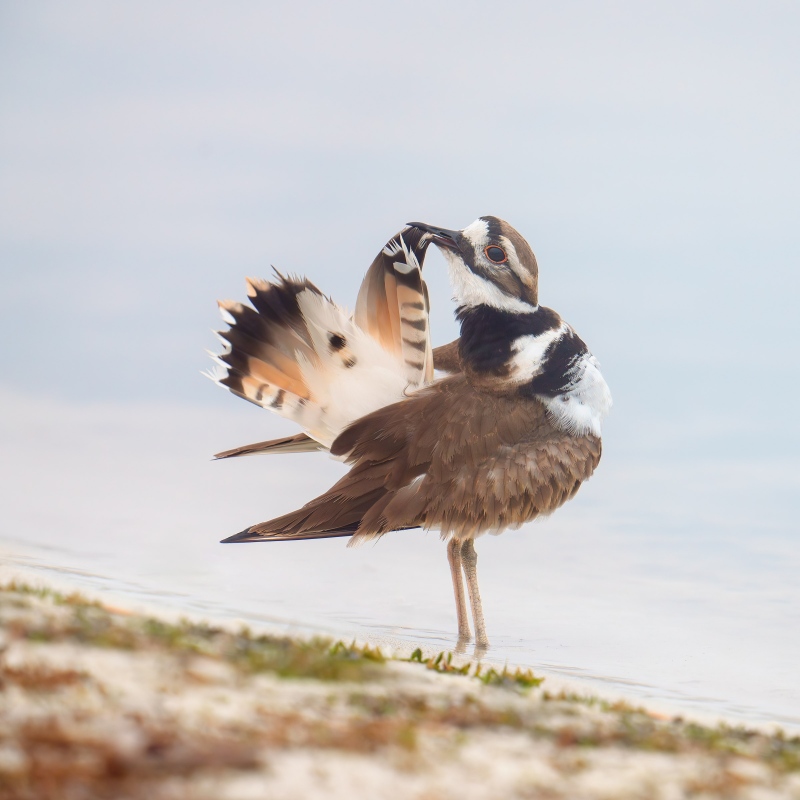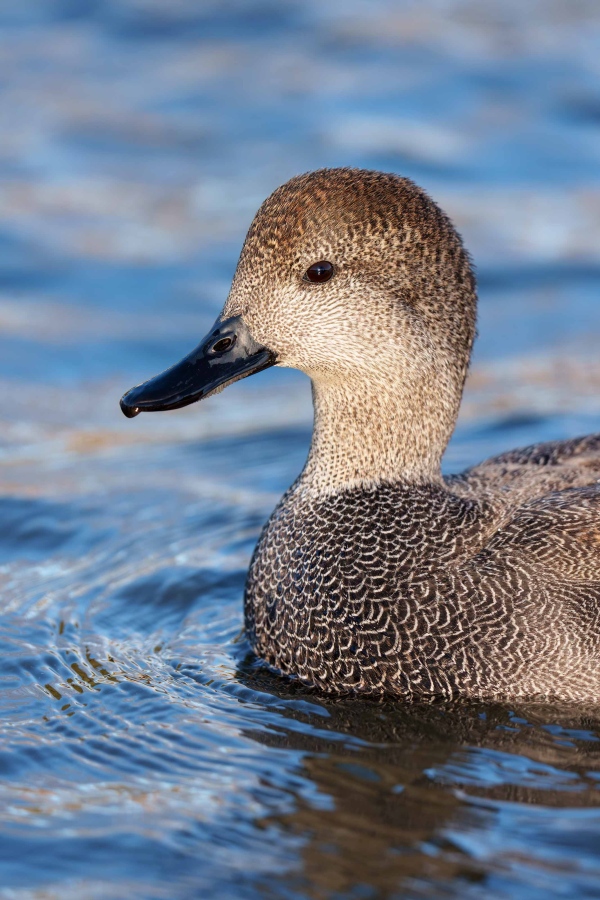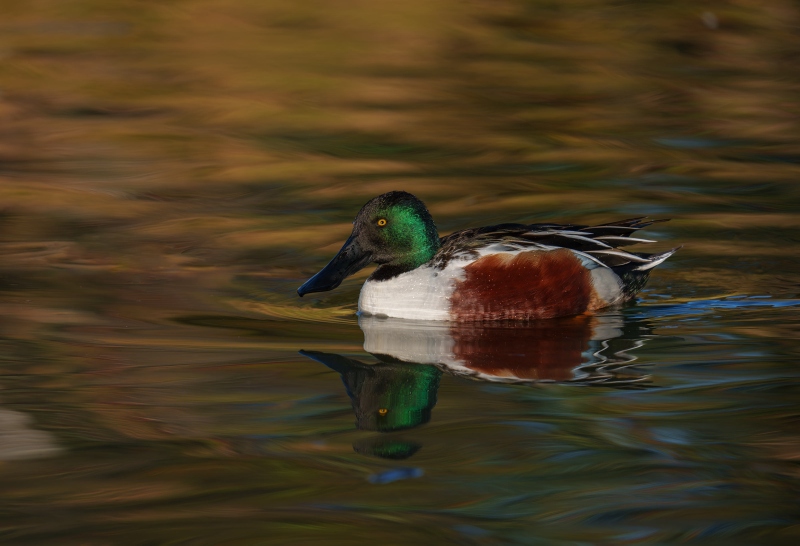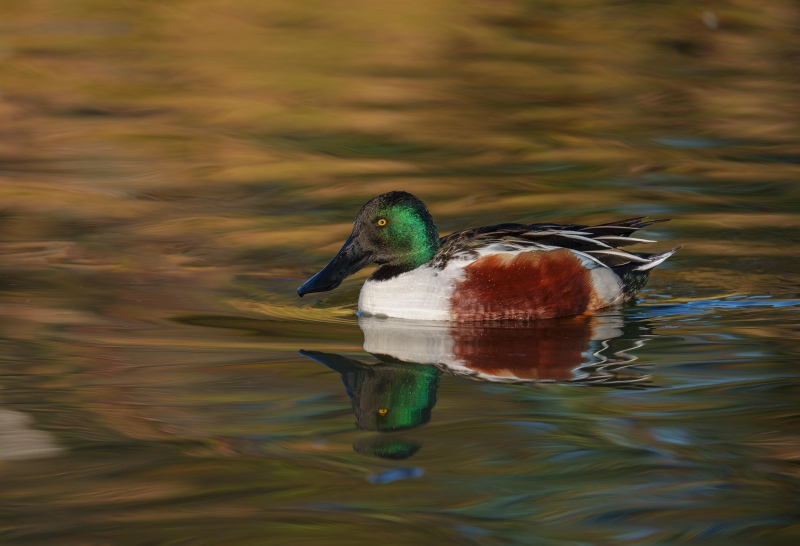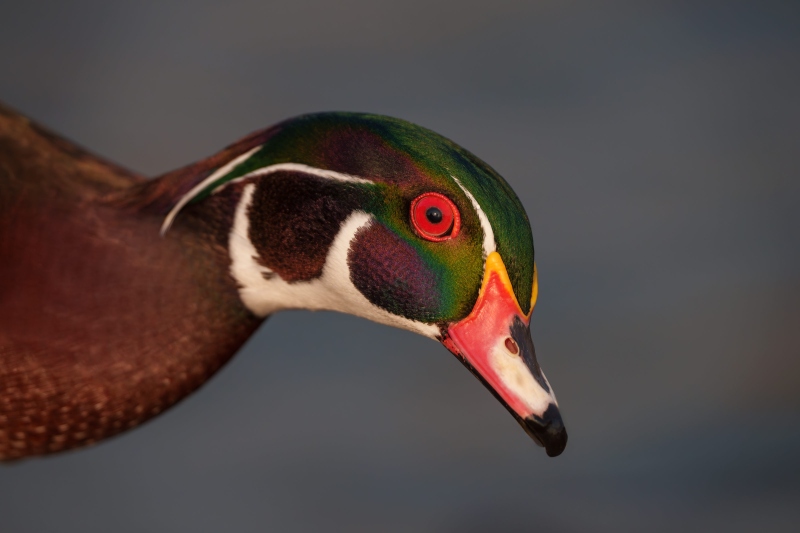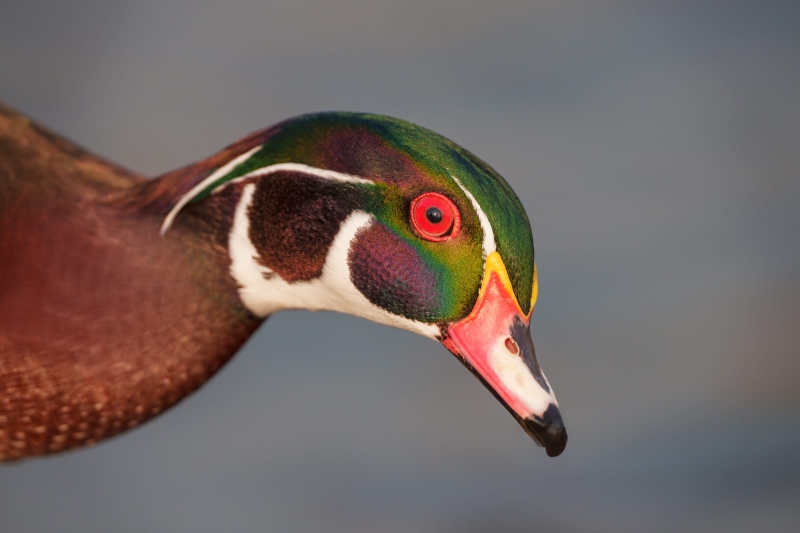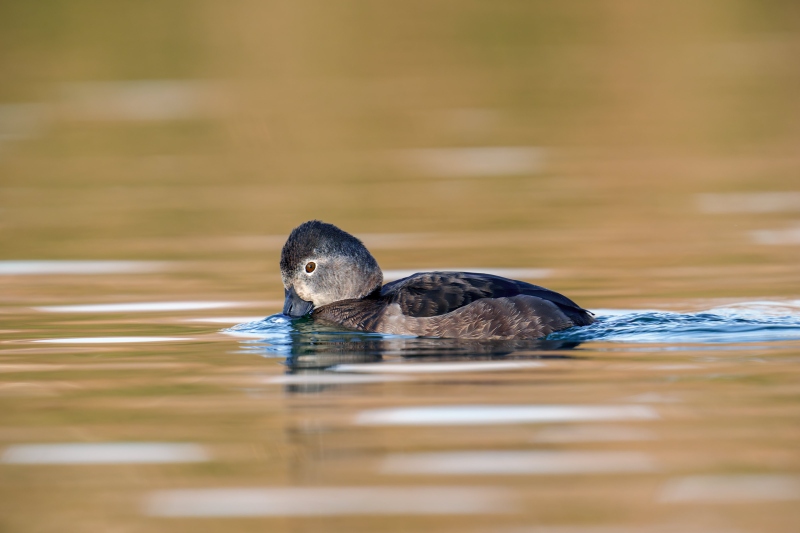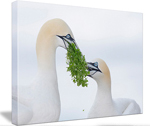February 8th, 2025 Your Call?
Which of today’s four featured images do you find most interesting? Why?
Please Note
As only two folks left comments at the last blog post, I responded to them here.
What They Said About San Diego
Colleen O’Connor, the Irish Lass, unsolicited via e-mail
Artie–Thank you for … everything you taught me. It was the single most impactful learning experience in my life. I hope to join another IPT in 2025 to reinforce and build upon what I learned in San Diego. All the Best — Colleen
ps: Wow! The optimization videos are terrific; thank you for taking the time to do them. So much learning to be had. I’ve looked at two and am very excited.
Warren Robb, USN retired fighter pilot, via blog comment
Observing and photographing the amazing pelicans at La Jolla was great fun and a personally rewarding experience. Your expert guidance on first “seeing the shot” and then on the mechanics of capturing a sharp, properly exposed, well designed image with the right gear was invaluable. Thank you Artie for another great IPT. Warren
Adrian Whitchelo-Scott, unsolicited via e-mail
Good morning Artie, A huge thank you for an outstanding IPT. I learned a great deal from your wisdom and knowledge, from exposure to choosing the ideal shutter speed and so much more. Kindly extend a thank you to Bob for taking on the task of driving us around and lots more. I hope to participate in another IPT in the future. In the meantime, I will be watching my sun angle! Be well, (Yo) Adrian
Vasili Chernishoff, unsolicited via e-mail
I wanted to thank you again for such a fantastic learning experience; The San Diego trip exceeded my expectations, and I truly appreciate everything I gained from the workshop. I’m already looking forward to several more in Florida! Vasili
What’s Up?
Note: three of the six San Diego participants have already signed up for another IPT! If you would like to learn about changing your life by joining me in San Diego for the 2026 San Diego AirBnB IPT experience, please get in touch via e-mail or shoot me a text to 863-221-2372. No rental vehicle needed!
On Friday, Bob Eastman and I headed early to Lakeland. With overcast and fog, our first stop was Circle B Bar Preserve. We walked three miles and created only a few hopelessly bad images. Next stop was Lake Morton. The American White Pelicans were finally in. We also had a male Redhead and lot of flying Double-crested Cormorants. We stopped in Winter Haven so that Bob could pick up 10 pounds of fresh tuna from Fish Store Mike to freeze and bring back to Wisconsin after he drops me at the airport early on Monday morning for my flights to Anchorage. He should be home by Wednesday.
On Saturday evening, we drove around for about 30 minutes with nothing to shoot. That despite the fact that a lovely orange-red sunset was shaping up. Then, for no reason at all, I picked a spot and said, “This should do it.” In the last five minutes before the sun disappeared the following showed up:
1- A Bald Eagle harassed an Osprey and eventually wound up with the fish. All of that occurred in the color.
2- A large flock of Cattle Egrets that had been flying as it usually does just above the surface of the lake, made a u-turn, then made another u-turn and flew through the color and right in front of the sun.
3- Then, a Great Blue Heron flew through the brightest color and passed right in front of the sun.
After 42 years of bird photography, I have an uncanny knack for putting folks in the right spot at the right time.
It is very early on Saturday 8 February 2025. Though I have been thinking a lot about packing, I have yet to put a single thing into either of my checked bags. So, I have lots to do on Saturday. After, of course, we get back from a short morning photo session down by the lake. Whatever you opt to do, we hope that you too choose to have a great day.
If an item — a Delkin flash card, or a tripod head — for example, that is available from B&H and/or Bedfords, is also available in the BAA Online Store, it would be great, and greatly appreciated, if you would opt to purchase from us. We will match any price. Please remember also to use my B&H affiliate links or to earn 3% cash back at Bedfords by using the BIRDSASART discount code at checkout for your major gear purchases. Doing either often earns you free guides and/or discounts. And always earns my great appreciation.
Supporting My Efforts Here
If you enjoy and learn from the blog, are all set for gear, or live overseas, consider leaving a BAA Blog Thank You Gift here.
If you enjoy and learn from the blog, please consider using one of my affiliate links when purchasing new gear. It will never cost you a single penny. To support my effort here, please order from B&H by beginning your search here. Or, click here, to order from Bedfords and enter the discount code BIRDSASART at checkout to receive 3% cash back to your credit card and enjoy free Second-Day Air Fed-Ex shipping. It is always best to write for advice via e-mail.
In many cases, I can help you save some serious dollars. And/or prevent you from purchasing the wrong gear from the wrong shop.
Should You Upgrade to or Purchase a Sony a-1 ii?
I ordered my second a-1 ii two days ago. Every day that I use mine, the more I am amazed by speed and accuracy of the Bird Face-Eye tracking in AF-C and the overall performance of the camera.
Aside from the improved ergonomics as compared to the a-1, other nice features include the fact that the rear screen tilts both ways. Pre-capture will surely prove to be a plus while in my option, the Speed Boost feature is a total waste for bird photography. In addition, the resolution on the rear monitor has been improved dramatically. Not to mention at Bird Face-Eye tracking on the a-1 ii is vastly improved as compared to both the a-1 and the a9 iii and that the 51MP files are to die for. And don’t forget the Pre-Capture feature!
So, the big question is, is the a-1 ii “worth” a gear upgrade. Remembering that I can never know whether or not something is worth it to you, I can say that I was not floored when using my a-1 ii. The differences between the a-1 ii and the original a-1, are neither huge nor eye-opening. The huge difference between the new camera body and the a9 iii is, of course, the 51MP a-1 raw files (as compared to the 24MP files rendered by the a9 iii).
With the price of a new a-1 having recently dropped $1500.00 to $4,998.00, the decision for new Sony buyers is a very tough one. The a-1 ii sells new for $6,498.00. And the price of used a-1 bodies will continue to drop (but surely not as much as I had thought before using the a-1 ii).
If you do purchase an a-1 ii, be sure to use one of my two affiliate links so that you will receive my a-1 ii settings (in the form of a CAMSEa1ii.DAT file), the Buttons and Dials Guide, and an Info Sheet. Folks who do not purchase their new a-i using my B&H link or from Bedfords here and entering the BIRDSASART discount code at checkout will be able to purchase the a-1 ii guide for $227.43. If you are at all confused and do not want to screw up your order, please get in touch via e-mail.
I’ve spent hours trying to create images like this. Without very much success at all. On Tuesday the 14th, I tried for two minutes, using the technique that I had taught to the those in the group who wanted to try: Shutter Priority mode + 1v stop with AUTO ISO. I know that I nailed this one right off the bat so I went back to concentrating on birds.
The Spotlit Effect
With the sun making its way through a group of tall palm trees and spotlighting a single adult Western Gull on a nice pedestal perch, going vertical was the obvious choice. Exposing for the whites was easy using Zebra technology and left the dark rocks close to black. The preening pose was the cherry on top.
The Green Flash
Google AI Overview
The green flash is a brief, green flash of light that occurs at sunrise or sunset when the sun is disappearing or rising above the horizon. It’s a meteorological optical phenomenon that happens when sunlight disperses through the atmosphere, similar to a prism. The sun’s light disperses through the atmosphere as it sets or rises and the atmosphere acts as a prism, allowing only green, blue, or violet light to reach the viewer’s eye. The green flash is a result of the light reacting with the sky at the right angle. Green flashes are more common over water sunsets because the water heats the air, creating greater thermal contrast. They can be seen regularly on the Pacific horizon.
Key West, FL is supposed to be a great place to see the green flash. If you are not too drunk. I’ve never been. I have tried without success to photograph the green flash on the west coast of Florida as the sun sets over the Gulf. Image #3, over the Pacific, is my most successful attempt ever.
Higher Standards for Flight Photography
With the speed and accuracy of Bird Face-Eye tracking on the latest mirrorless camera bodies surpassing anything we ever dreamed of, the bar keeps being raised higher and higher. I created many, many thousands of images of Royal Terns in flight. All but a small handful were razor sharp on the bird’s eye or eyes. I kept less than 1% of them. Why so few keepers and so many in the trash bin?
1- Poor, uneven backgrounds.
2- Harsh shadows.
3- Less than perfect and/or uninspiring flight poses and wing positions.
4- Less than perfect subject to film plane orientation.
5- Off angled or uneven lighting.
6- Underwing shadows.
7- Distracting birds in the background.
8- Clipped wings or poor framing.
I had many keepers with pure white breaking wave backdrops. The background for Image #4 was the dark, almost black face of a cresting wave.
Typos
With all blog posts, feel free to e-mail or to leave a comment regarding any typos or errors.
February 6th, 2025
High Capacity Delkin CF Express Type A 4.0 Memory Cards
At present, there is no longer a need to change a memory card in the field. Both the new Delkin 480GB and 960GB cards have more than enough storage for 99.9% of field applications. Using these new cards, I have never hit the buffer with my a-1 ii despite hammering the shutter button on occasion. Regular readers know that I have been depending on Delkin cards for just about a quarter century. In that time I have never lost a single image due to card failure. I’ve put my Delkin cards in the washing machine and dryer and — after two days, recovered one from a bag of barbecued spare-rib fat and bones. I got the images off those cards without a problem. Most amazingly, after dropping a card in the parking lot at Nickerson Beach IPT, participant Carlotta Grenier found the card near the ladies’ room four days later after it had been run over by numerous vehicles. After consulting with Delkin, I ripped the mangled cover off the card, put it into the Delkin card reader, and got to enjoy each and every image. I sent the card back to Delkin and they kindly sent me a brand new one. Please do not try that with Sony or San Disk or any of the many cheaper off brand cards.
At a recent dinner in San Diego, Delkin founder, president, and CEO Martin Wood told how his folks were able to recover the data from an industrial card that survived a military jet fighter crash that burned for more than two hours at 2000° F.
The specs for both the Delkin 480GB and 960GB cards are identical:
Max Read Speed: 1830 MB/s
Max Write Speed: 1710 MB/s
Min Sustained Write Speed: 500 MB/s
Records Raw 8K, 6K, and 4K Video
Records High Bitrates and Frame Rates
Records Raw Photos and Rapid Bursts
To help facilitate card usage in almost any environment and keeping your content safe, Delkin has built its BLACK Series with a rugged design that is water and shock proof and is resistant to temperature extremes. In order to further enhance reliability and functionality, the BLACK Series is serialized and protected by a limited lifetime warranty and a 48-hour replacement guarantee upon registration with Delkin.
I have never bought the story that putting all your eggs in one basket is a big mistake. Having to use multiple cards during a single shooting session greatly increases the chances of losing one or more.
You can order your Delkin cards and their great card readers from BIRDS AS ART by clicking here. I recommend minimizing your per GB costs by going with the Delkin Devices 960GB BLACK CFexpress Type A 4.0 Memory Card.
What’s Up?
With the heavy fog (as predicted), I was not excited about heading down to the lake on Tuesday morning. But boy, I was glad that we went out. Bob and I made some excellent images and I learned some new stuff about exposure and on optimizing foggy morning images. Though the weather was much better on Wednesday morning, we did not do quite as well. Strange both mornings was a young Black Skimmer, only the second one I’ve seen at ILE in 25 years. It did not look to be too well on Tuesday but had a lot more life in it on Wednesday.
I’ve been getting a lot more work done on my 2024 taxes. I was glad to learn that the newer of my two Sony a-1 bodies sold the first day it was listed. The market for used copies of this great camera body is, as expected, holding up well. I am keeping the older one for now as a back-up for the Homer trip. I am not sure when I will receive my second a-1 ii. If you order an a- ii be sure absolutely sure to use one of my links to get the three set-up e-mails for free. Otherwise you will either need to go it alone or send a PayPal for $227.43 to birdsasart@verizon.net.
Bob is dropping me off at the Orlando Airport early next Monday and then beginning his drive back to a very cold Wisconsin.
On Wednesday evening we enjoyed a nice sunset with the skimmer and a White Ibis available for silhouettes. None were inspiring.
Today is Thursday 6 February. Though I have a ton of organizing and packing to do, we will surely head down to the lake for a short morning session. Whatever you opt to do today, we hope that you have a great day and that you too choose to be happy.
If an item — a Delkin flash card, or a tripod head — for example, that is available from B&H and/or Bedfords, is also available in the BAA Online Store, it would be great, and greatly appreciated, if you would opt to purchase from us. We will match any price. Please remember also to use my B&H affiliate links or to earn 3% cash back at Bedfords by using the BIRDSASART discount code at checkout for your major gear purchases. Doing either often earns you free guides and/or discounts. And always earns my great appreciation.
Supporting My Efforts Here
If you enjoy and learn from the blog, are all set for gear, or live overseas, consider leaving a BAA Blog Thank You Gift here.
If you enjoy and learn from the blog, please consider using one of my affiliate links when purchasing new gear. It will never cost you a single penny. To support my effort here, please order from B&H by beginning your search here. Or, click here, to order from Bedfords and enter the discount code BIRDSASART at checkout to receive 3% cash back to your credit card and enjoy free Second-Day Air Fed-Ex shipping. It is always best to write for advice via e-mail.
In many cases, I can help you save some serious dollars. And/or prevent you from purchasing the wrong gear from the wrong shop.
In the Last Blog Post
In the last blog post, Four Very Special San Diego Not Flying Duck Images. Part I here, my very favorite image was the Northern Shoveler drake. Why? A good photo of this species in soft light had been eluding me for several decades. In addition, I loved the swirly water. Thanks to Dr. Fish for suggesting that I lighten that one. And to Anthony Ardito for suggesting that I lighten the Wood Duck drake head portrait.
For me, the other three images were tied for 2nd place as each was very strong.
|
|
|
These four raw files (each exposed well to the right), were created on 4 February 2025 down by the lake near my home at ILE while working from the front seat of my SUV with my BLUBB-supported super-telephoto rig.
Photo Mechanic screen capture of four foggy morning photos
Image copyright 2025 Arthur Morris/BIRDS AS ART
|
Exposing Way to the Right
Note that all of today’s featured images were created at either +2 or +2.3 stops (once again in Shutter Priority mode with EC on the thumb Wheel and AUTO ISO). Why? With the uniformly light-toned backgrounds, working in Shutter Priority as above allowed me to quickly and efficiently set my shutter speed, add a ton of light, and concentrate on making sharp images.
The key to getting the color right in each image was the final step: running a layer of Average Blur Color Balance as detailed in Digital Basics II. I should do a short video on this one …
|
|
|
This image was created on 4 February 2025 down by the lake near my home at ILE. Working from the front seat of my SUV, I used the BLUBB-supported Sony FE 600mm f/4 GM OSS lens with the Latest Greatest Sony Flagship Body, the a-1 ii Mirrorless Camera. The exposure was determined via Zebras with Exposure Compensation on the thumb dial. Multi-metering +2.3 stops. AUTO ISO set ISO 640. 1/125sec. at f/4 (wide open) in Shutter Priority mode. Amazingly, RawDigger showed even +2.3 stops was not enough; the exposure here was a full /3 sto short of perfect. AWB at 7:45:46am on a very foggy morning.
Tracking: Zone/AF-C with Bird-Eye/Face Detection performed perfectly. Click on the image to enjoy the high-res version.
Image #1: Mottled Duck and grasses on foggy morning
Image copyright 2025 Arthur Morris/BIRDS AS ART
|
The Image Clean-Up
By clicking on the Photo Mechanic composite screen capture above to enlarge it, you can see that I did some neat clean-up work on the grasses, especially the clump below the bill. All done with the Remove Tool as detailed in the Digital Basics III Video Series. The pleasingly arranged grasses that I opted to leave create a peaceful easy mood.
Not to mention that the contrast and color are improved 1000% from the raw file.
|
|
|
This image was also created on Tuesday 4 February 2025 down by the lake near my home at ILE. Again, working from the front seat of my SUV, I used the BLUBB-supported Sony FE 600mm f/4 GM OSS lens with the Latest Greatest Sony Flagship Body, the a-1 ii Mirrorless Camera. The exposure was determined via Zebras with Exposure Compensation on the thumb dial. Multi-metering +2.0 stops. AUTO ISO set ISO 400. 1/125sec. at f/4 (wide open) in Shutter Priority mode. RawDigger showed that the exposure was dead solid perfect. AWB at 7:50:06am on a very foggy morning.
Tracking: Zone/AF-C with Bird-Eye/Face Detection performed perfectly. Click on the image to enjoy the high-res version.
Image #2: Black Skimmer in worn first winter plumage
Image copyright 2025 Arthur Morris/BIRDS AS ART
|
It’s Better Side …
On Tuesday morning, this young skimmer’s right eye was cloudy and barely open. Thus, I waited for the look-back pose to create a pleasing image. As mentioned above, the bird looked much better on Wednesday. But the left side of its face was still its best side.
|
|
|
This image was also created on 4 February 2025 down by the lake near my home at ILE. Again, working from the front seat of my SUV, I used the BLUBB-supported Sony FE 600mm f/4 GM OSS lens with the Latest Greatest Sony Flagship Body, the a-1 ii Mirrorless Camera. The exposure was determined via Zebras with Exposure Compensation on the thumb dial. Multi-metering +2.3 stops. AUTO ISO set ISO 400. 1/125 sec. at f/4 (wide open) in Shutter Priority mode. Even though this one was created at +2.3 stops, RawDigger showed that it was a full half stop too dark. AWB at 7:51:45am on a very foggy morning.
Tracking: Zone/AF-C with Bird-Eye/Face Detection performed perfectly. Click on the image to enjoy the high-res version.
Image #3: Mottled Duck pair, male with yellow bill on our left
Image copyright 2025 Arthur Morris/BIRDS AS ART
|
A Double Miracle!
Like today’s first two images, this one was created at the wide open aperture to save on ISO. As the ducks were swimming (albeit slowly), the sharpness of this image involved two miracles:
1- There is almost no motion blur on the heads — both eyes are sharp.
2- The two ducks were exactly on the same plane; both eyes are razor sharp.
Do remember that if you are using a long lens on a beanbag, you must remember to turn off Direct Manual Focus (DMF) to avoid throwing off the focus accuracy. With Sony, the switch is conveniently on the barrel of the GM lenses. G lenses (like the 200-600), do not offer this feature. With Canon, I believe that you need to turn DMF on and off via the menu. I am not sure with Nikon.
It is always good to be lucky but folks who do things gooder always tend to be luckier. Gooder is a Bob Eastman-ism for correctly or better.
|
|
|
This image was also created on 4 February 2025 down by the lake near my home at ILE. Again, working from the front seat of my SUV, I used the BLUBB-supported Sony FE 600mm f/4 GM OSS lens with the Latest Greatest Sony Flagship Body, the a-1 ii Mirrorless Camera. The exposure was determined via Zebras with Exposure Compensation on the thumb dial. Multi-metering +2.0 stops. AUTO ISO set ISO 1250. 1/125 sec. at f/8 (stopped down two stops) in Shutter Priority mode. Again, RawDigger showed that the exposure was a full /3 stop short of perfect. AWB at 7:57:17am on a very foggy morning.
Tracking: Zone/AF-C with Bird-Eye/Face Detection performed perfectly. Click on the image to enjoy the high-res version.
Image #4: Killdeer preening tail feathers
Image copyright 2025 Arthur Morris/BIRDS AS ART
|
Two For the Price of One
While photographing the young skimmer, I noticed a preening Killdeer perhaps five yards further up the shoreline. Good photographers keep their eyes moving at all times in search of something better 🙂
I am not sure how or why I wound up at f/8 here as stopping down two full stops cost me both shutter speed and ISO. I did eventually make a few frames of the skimmer sleeping at 1200mm at f/8 and then at f/16 to be used in a future blog post on stopping down for bird photography. That inspired by a question left in a comment by Thomas Redd at the Los Tres Amigos Do a Tiny, Feisty Colorful Jewel blog post here.
|
|
Image #4A: Square crop of the Killdeer preening tail feathers image
Image copyright 2025 Arthur Morris/BIRDS AS ART
|
Your Call?
Which version of the preening Killdeer do you prefer, Image #4 at 3X2, of #4A, the square crop of the same photo. Why?
Typos
With all blog posts, feel free to e-mail or to leave a comment regarding any typos or errors.
February 4th, 2025 Your Challenge
Your challenge today is a tough one as each of today’s featured images is quite strong. Once again, I ask you to judge them by placing the strongest image first and your least favorite last. Your comment might look like this: 2, 3, 1, 4. Feel free to justify one or more of your choices. I will share my rankings with you here in the next blog post.
Sony Alpha 1 (a-1) Mirrorless Camera Body
Your truly, Arthur Morris/BIRDS AS ART Is offering his rarely used backup Sony a-1 (ILCE-1) mirrorless camera body in excellent plus plus condition for a ridiculously low $3,498.00. This body has been updated to Firmware 3.00 that reportedly improves Bird Face-Eye tracking to levels attained by the a1-ii. The camera has my current a-1 set-up on it. The sale includes the current Buttons and Dials Guide and the Info Sheet, the original product box, one battery, the charger, the camera strap, and insured ground shipping via major courier to lower-48 US addresses only. Your item will not ship until your check clears unless other arrangements are made.
Please contact artie via e-mail or y text to 863-221-2372.
I have used Sony a-1 bodies as my workhorse cameras for more than three years. They produce stunning 51MP files with vivid natural colors. The AF system is science-fiction-like. They are rugged and dependable and 30 frames per second is nothing to sneeze at. With a brand new A-1 ii going for $6498.00, you can save an even $3000.00 by grabbing my nearly as good as new copy ASAP Right now, B&H is offering a used a-1 in 9+ condition for $4,097.00.
artie
What’s Up?
As expected (by me, at least), our direct flight from San Diego to Orlando was blessedly uneventful. After being in the air for only a shade over four hours to fly across the country. Due to horrendous traffic on I4, it took us well more than two hours to get back to my home at Indian Lake Estates. Just for the record books, the flight covered 2431 miles in about 250 minutes, about 9 miles/minute or 540 mph. The car ride covered 77 miles in about 140 minutes, .55 miles/minute or about 33mph. All distances as the crow files. Go figure.
Monday morning dawned completely foggy so Bob Eastman and I went more than two full days without making a single bird photograph. Practically unthinkable. I was glad to learn that Dane Johnson sold his second a-1 body (in recent weeks) for $3550.00.
Today is Tuesday 4 February 2025. The forecast for the next three mornings at least is for fog, fog, and more fog. Big time bummer. I have lots of work to do getting ready to fly to Anchorage, AK next Monday for the 2025 Homer IPTs. Whatever you opt to do today, I hope that you have a great day and choose to be happy.
If an item — a Delkin flash card, or a tripod head — for example, that is available from B&H and/or Bedfords, is also available in the BAA Online Store, it would be great, and greatly appreciated, if you would opt to purchase from us. We will match any price. Please remember also to use my B&H affiliate links or to earn 3% cash back at Bedfords by using the BIRDSASART discount code at checkout for your major gear purchases. Doing either often earns you free guides and/or discounts. And always earns my great appreciation.
Supporting My Efforts Here
If you enjoy and learn from the blog, are all set for gear, or live overseas, consider leaving a BAA Blog Thank You Gift here.
If you enjoy and learn from the blog, please consider using one of my affiliate links when purchasing new gear. It will never cost you a single penny. To support my effort here, please order from B&H by beginning your search here. Or, click here, to order from Bedfords and enter the discount code BIRDSASART at checkout to receive 3% cash back to your credit card and enjoy free Second-Day Air Fed-Ex shipping. It is always best to write for advice via e-mail.
In many cases, I can help you save some serious dollars. And/or prevent you from purchasing the wrong gear from the wrong shop.
In the Last Blog Post
As was clearly stated in the last blog post here, Bob Eastman’s spectacular top shot of a leaving the scene male Cinnamon Teal was the strongest image. By far. I did forget to mention that another factor that often comes into play with Bob’s great success is that he is always more shutter button aggressive than I am.
Anyhoo, asked to pick the second best photo, several were mentioned; #2, the landing-in-soft-light Mallard drake, #5, the hen Lesser Scaup touching down, and #6, the braking Gadwall hen each garnered two votes. Image #4, the landing hen teal got a single vote.
My favorite was #5, the hen Gadwall on final approach because of the sharpness, the super-soft background, and the elegant braking pose. Thanks to all who commented.
|
|
|
This image was created on 10 January at Santee Lakes Regional Preserve on the Expanded San Diego 2025 IPT. Seated on a dirt bank, I used the hand held Sony FE 200-600mm f/5.6-6.3 G OSS lens (at 478mm) and the and The Latest Greatest Sony Flagship Body, the a-1 ii Mirrorless Camera. The exposure was determined via Zebras with Exposure Compensation on the thumb dial. Multi-metering +0.7 stops. AUTO ISO set ISO 2000: 1/2000 sec. at f/6.3 (wide open) in Shutter Priority mode. RawDigger showed that the exposure was dead solid perfect. AWB at 3:46:47pm on a sunny afternoon.
Tracking: Zone AF-C with Bird Eye/Face Detection enabled performed perfectly.
Image #1: Gadwall drake — front end vertical portrait
Image copyright 2025 Arthur Morris/BIRDS AS ART
|
Duck Too Close — What to Do?
If a duck is so close to you that it does not fit into the frame, simply turn your camera body on end and go for a front-end vertical portrait. In general, the lower you can get, the better. At Santee, the problem is that it is usually impossible or at least very difficult to get close to water level as the banks around the lakes are raised at least a foot or two.
|
|
|
This image was created on 12 January at Santee Lakes Regional Preserve on the Expanded San Diego 2025 IPT. Seated on a dirt bank, I used the hand held Sony FE 200-600mm f/5.6-6.3 G OSS lens (at 600mm) and the and the Latest Greatest Sony Flagship Body, the Sony a-1 ii Mirrorless Camera. The exposure was determined via Zebras with ISO on the thumb dial. ISO 800: 1/2500 sec. at f/6.3 (wide open) in Shutter Priority mode. RawDigger showed that the exposure was dead solid perfect. AWB at 8:12:59am on a sunny morning.
Tracking: Zone AF-C with Bird Eye/Face Detection enabled performed perfectly.
Image #2: Northern Shoveler drake floating
Image copyright 2025 Arthur Morris/BIRDS AS ART
|
Getting Lucky on a Usually Shy Species
There are lots of Northern Shovelers at Santee Lakes Regional Preserve. They are exceedingly difficult to photograph. As many as several hundred are seen regularly surface feeding in large swirling groups of many dozens in the vicinity of aeration outflows in the middle of the first two lakes. They are not at all interested in tossed scratch, a supplemental treat for ducks made from a mix of grains and seeds. If you spot a handsome male swimming by the near bank and attempt to get into position, it will immediately turn tail and swim directly away from you until it reaches the other side of the lake. As the males are a high contrast subject, photographing them in anything but sweet light is a hopeless endeavor.
Several of us were sitting by the Wood Duck Oak Tree early one morning when a gorgeous male shoveler floated right by us at fairly close range. Because it was angled slightly away from me the rear half of the duck was in the shade. As Anita North taught me last week, I used a Linear Gradient in Adobe Camera Raw and subtracted the background. I’ve been struggling to learn to use a Linear Gradient for more than two decades and I am thrilled to have it down now. It will be one of the new techniques featured in Volume II of the Digital Basics III series that should be available in mid-April 2025.
|
|
Image #2A: Northern Shoveler drake floating (lighter)
Image copyright 2025 Arthur Morris/BIRDS AS ART
|
A Lighter Version for Dr. Fish
Perhaps I have been in a dark zone …
|
|
|
This image was created on 24 January at Santee Lakes Regional Preserve on an Expanded San Diego 2025 IPT. Seated on the dirt bank, I used the hand held Sony FE 300mm f/2.8 GM OSS Lens (Sony E) with the Sony FE 2x Teleconverter and the Latest Greatest Sony Flagship Body, the a1 II Mirrorless Camera. The exposure was determined via Zebras with Exposure Compensation on the thumb dial. Multi-metering -0.7 stops. AUTO ISO set ISO 1600: 1/3200 sec. at f/5.6 (wide open) in Shutter Priority mode. RawDigger showed that the exposure was dead solid perfect: AWB at 3:22:34pm on a sunny afternoon.
Tracking: Zone/AF-C with Bird Eye/Face Detection enabled performed perfectly.
Image #3: Wood Duck drake head portrait
Image copyright 2025 Arthur Morris/BIRDS AS ART
|
Road As Background
At times, several of the duck species that come to the scratch climb up out of the lake onto the bank or the road to forage for dropped tidbits of grain and seed. The drake woodie paused on the asphalt road for several seconds and gave me time to adjust the exposure compensation to avoid blowing the white patches. Making images that show the purple cheek patch requires exposing well to the right along with a healthy dose of reflectance luck.
Speaking of Shutter Priority with Exposure Compensation (EC) and AUTO ISO
As we saw in the previous blog post here, using shutter priority for ducks in flight often leads to spotty, inaccurate results for a variety of reasons. (Remember that for the same reasons, similar results come with Manual mode.) When doing swimming ducks or posing waterfowl, however, you generally have a bit more time, and you know which species you will be photographing at a given moment, and have a pretty good idea as to the tonality of the background. Thus, it is easy to pick your shutter speed, use Zebras to dial in the correct EC, and create consistently good or excellent exposures.
|
|
Image #3A: Wood Duck drake head portrait
Image copyright 2025 Arthur Morris/BIRDS AS ART
|
Lighter, for Anthony
After Anthony Ardito left the comment below, I realized that he had a good point. So, I brought the image back into Photoshop and pulled up the curve. What do you think?
Anthony Ardito: February 4, 2025 at 9:45am
Yes #3 is quite stunning with the head peaking in from the left frame. That composition makes it really stand out! And I know you say exposure was dead on, but I think it would look even better brightened up just a tad.
My response
Thanks, Anthony. Do understand that exposure and presentation brightness are unrelated.
much love, artie
|
|
|
This image was created on 31 January 2025 at Santee Lakes Regional Preserve. Seated on a dirt bank, I used the Robus RC-5570 Vantage Series 3 Carbon Fiber Tripod/Levered-Clamp FlexShooter Pro-mounted Sony FE 600mm f/4 GM OSS lens with the Sony FE 2x Teleconverter, and The Latest Greatest Sony Flagship Body, the a-1 II Mirrorless Camera. ISO 1250. The exposure was determined via Zebras with Exposure Compensation on the thumb dial. Multi-metering +1.0 stops. AUTO ISO set ISO 2500: 1/500 sec. at f/8 (wide open) in Shutter Priority mode. RawDigger showed that the exposure was 1/3 stop short of perfect. AWB at 4:42:48pm on a sunny afternoon.
Zone/AF-C with Bird-Eye/Face Detection performed perfectly. Click on the image to enjoy the high-res version.
Image #4: Ring-necked Duck hen sipping
Image copyright 2025 Arthur Morris/BIRDS AS ART
|
Why 1200mm for Swimming Ducks?
Even when sitting, the pleasing reflections of live or dead vegetation are often confined to the far side of the pond. I go to 1200mm and try to be patient enough to wait for some ducks to swim through the pretty colors. Windless conditions are of course best as choppy water breaks up the reflections. A second benefit of working with super-long focal lengths is that your angle of declination is reduced. With more distant subjects, it often appears that you are photographing from a very low perspective.
Typos
With all blog posts, feel free to e-mail or to leave a comment regarding any typos or errors.
|
|

